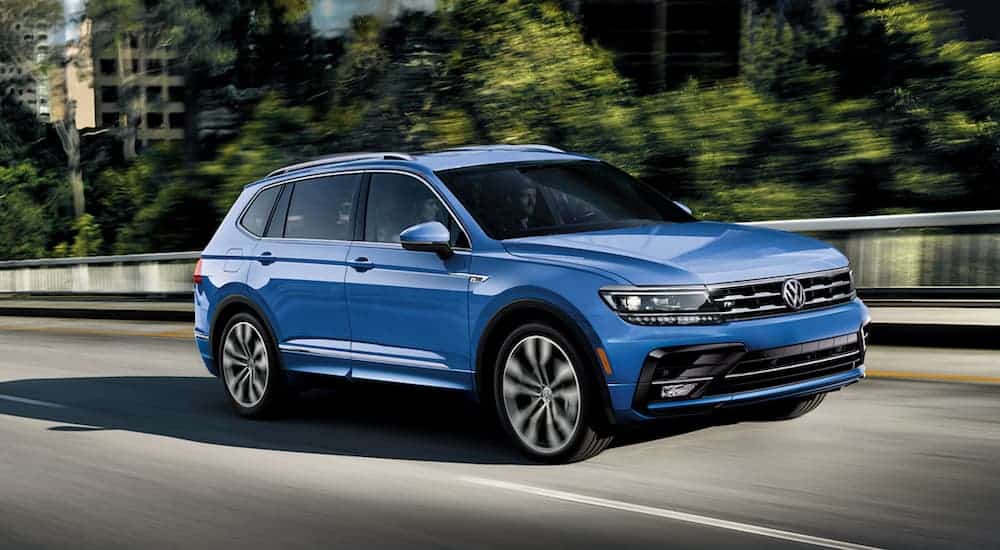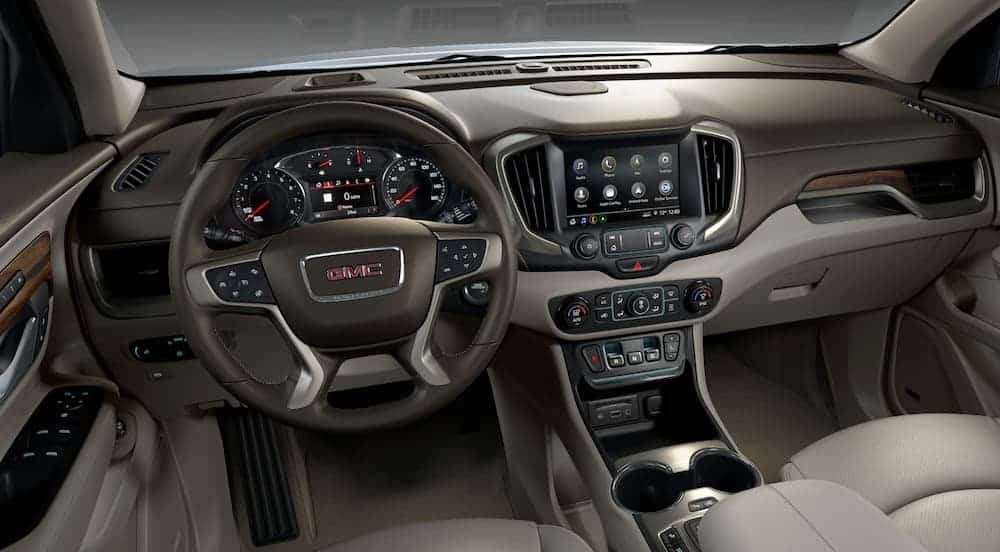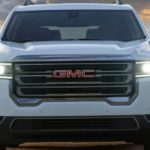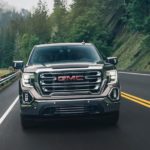Many drivers dream of driving a well-rounded SUV that provides great cargo space, a solid engine, and some decent capability when it comes to off-pavement driving. SUVs are both everyday drivers and adventure cars, meant to go and keep going. There are many models within the SUV market to choose from, two of the best being the 2020 GMC Terrain, and the 2020 Volkswagen Tiguan. These are two rather remarkable SUVs, but before you rush to the closest GMC dealer near you, or hustle to a Volkswagen dealership website, you may want to see how these two models compare. By inspecting engine builds, cargo capacities, and offered features, today, we are going to determine which of these two SUVs is superior.
The Overall Package
The first impression of a vehicle comes from its variety of trims and the price. While trims can be a rough way to gauge the quality of a car, pricing can make or break an opinion on a vehicle. Starting with the Volkswagen Tiguan, you can purchase a base model for as low as $24,945 MSRP. This isn’t a terrible price for an SUV with the option to add a whole other row of seating depending on the configuration chosen. Trims are diverse enough, offering drivers the S, SE, SE R-Line Black, SEL, and SEL Premium R-Line. So considering the low entry price and a slew of trims, the Volkswagen Tiguan makes a pretty solid first impression, but what about the GMC Terrain?
The 2020 GMC Terrain can be bought for as low as $28,400 MSRP, which is a margin higher than the German-engineered competition. GMC decided to keep things simple with their SUV, offering four trims to choose from: the SL, SLE, SLT, and Denali. While you won’t get the option to add a third row in the GMC Terrain, it’s not too much of an issue as we shouldn’t rightly expect GMC to pack another row of seats into this relatively small SUV. Additionally, this vehicle comes at a higher price with good reasons – good reasons we are about to get into.
The Power at Their Disposal
Now let’s get into the nitty-gritty details – the engines. Performance is critical for any car, but for an SUV, it can define the whole driving experience. Starting with the VW Tiguan, base models can expect to be packed with a 184 hp, 2.0-liter turbo-4 engine. This compact turbocharged engine is supported by an 8-speed automatic transmission, and standard front-wheel drive to make 221 lb-ft of torque. AWD is optional in the Volkswagen Tiguan, but besides that, you won’t get much more in terms of performance upgrades.
Everything beyond Volkswagen’s 4MOTION all-wheel drivetrain is mostly aesthetic. Although, the 8-inches of ground clearance give the Volkswagen a competitive edge when it comes to off-road capability. Sure, you may not be hitting rough trails in the Volkswagen Tiguan, but if you’re faced with harsh road conditions or are headed out to a campsite, you should be alright for the most part.
So, how does the GMC Terrain compare? Well, base models find themselves powered by a 170 hp, 1.5-liter turbocharged engine that pumps out 203 lb-ft of torque. This base engine is equipped with a rather agile 9-speed automatic transmission, and like the competition, front-wheel drive is standard with the option to upgrade to an all-wheel drivetrain. Although, unlike the VW Tiguan, the GMC Terrain can be upgraded to sport an engine with a bit more muscle. Take a step up to higher trims, and you’ll get a 2.0-liter turbocharged inline-4 engine that makes 252 hp and 260 lb-ft of torque. Ground clearance starts at 6.9-inches but bumps up to 7.9 if you purchase the SLT or Denali trims, which put it in nearly the same category off-road-wise as the VW Tiguan.
So, which of these SUVs is the better performer? Well, the VW Tiguan does offer more power and ground clearance right out of the gate, but the GMC Terrain delivers better performance at higher trims and allows drivers to make more choices. At the end of the day, it all depends on how much you’re willing to spend. It is important to note, though, that the GMC Terrain does also have an edge in terms of fuel economy. While neither of these SUVs is fuel sippers, the base model Terrain earns 27 MPG combined, while the VW Tiguan earns 23 MPG combined.
An Interior Review
Step into either of these midsize SUVs, and you’ll find a well-spaced cabin. That said, the VW Tiguan comes with a bit of a twist: the option to add a third row of seating. This is a rare thing for a midsize SUV to do, and while it is pretty game-changing, it isn’t always necessary to have that third row. For instance, five-row models get a maximum cargo capacity of 73.5 cu.ft., which is pretty good for a car of this size. Meanwhile, the seven-seater option steals some space offering 65.7 cu.ft. total. If we had to pick one, we’d go with the five-seater model, that said, no matter which model you opt for, you’ll get cloth upholstery and soft-touch plastics in base models. Higher-end versions make use of greater materials, though, adding in synthetic or even real leather.
The GMC Terrain provides a decently spaced cabin, offering 65.5 total cu.ft. when the second row of seats is folded flat. Soft-touch plastics and durable cloth upholstery are used tastefully in base models, and the active noise cancellation makes riding in the GMC Terrain remarkably silent. Another interior highlight of the GMC Terrain is the fact that rear and front-seat passengers are treated nearly equal, with up to 39.7 inches of legroom in the back seats. And if you want it, you can upgrade to add leather upholstery to the GMC Terrain’s seating, which elevates your entire driving experience. In this area, what is “best” is dependent on what each individual driver is looking for; more seats, or a smaller, more maneuverable vehicle.
A Brief Look at Technology
When it comes to technology, both models come out relatively even, but the Terrain does have the advantage. Step into the base model of the VW Tiguan, and you’ll get a rather basic 6.5-inch infotainment touchscreen that’s installed with Apple CarPlay and Android Auto compatible software. There is also a standard-issue of active safety tech, which is refreshing. No matter which model you purchase, you’ll get automatic emergency braking, blind-spot monitors, and rear cross-traffic alerts at no additional cost.
The GMC Terrain, on the other hand, has a bigger standard infotainment screen measuring in at 7.0-inches and is also installed with Apple CarPlay and Android Auto software. There is also keyless ignition, that nifty active noise cancellation, a pair of USB charging ports, and the option to easily add a 4G LTE Wi-Fi hotspot. And like the competition, the GMC Terrain provides an ample array of active safety features as standard including blind-spot monitors, forward-collision warnings with automatic emergency braking, and active lane control. Overall, this is a more extensive list than the Tiguan; plus, the infotainment screen is larger.
Picking Out Your Ideal SUV
Between these two SUVs, which is the better buy? Well, it all comes down to your personal preference. The GMC Terrain offers better powertrain options, a greater use of infotainment tech, and the best fuel economy, but it doesn’t come with an optional third-row like the Tiguan. So, if you need the extra seats, the Tiguan may be the better option. Otherwise, however, the GMC Terrain is definitely the superior SUV.






